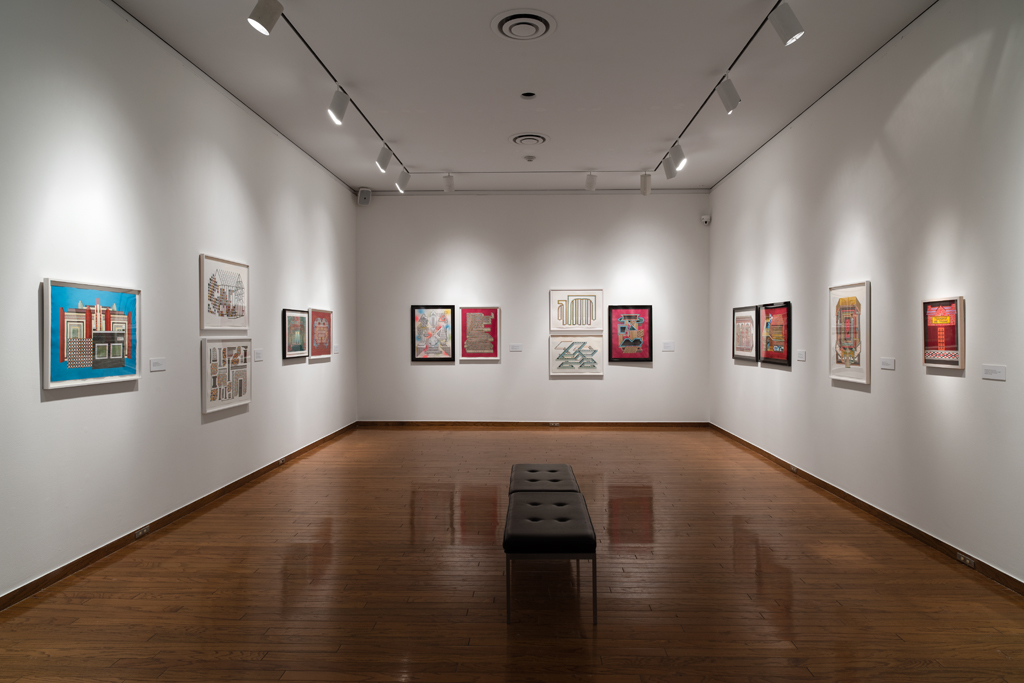
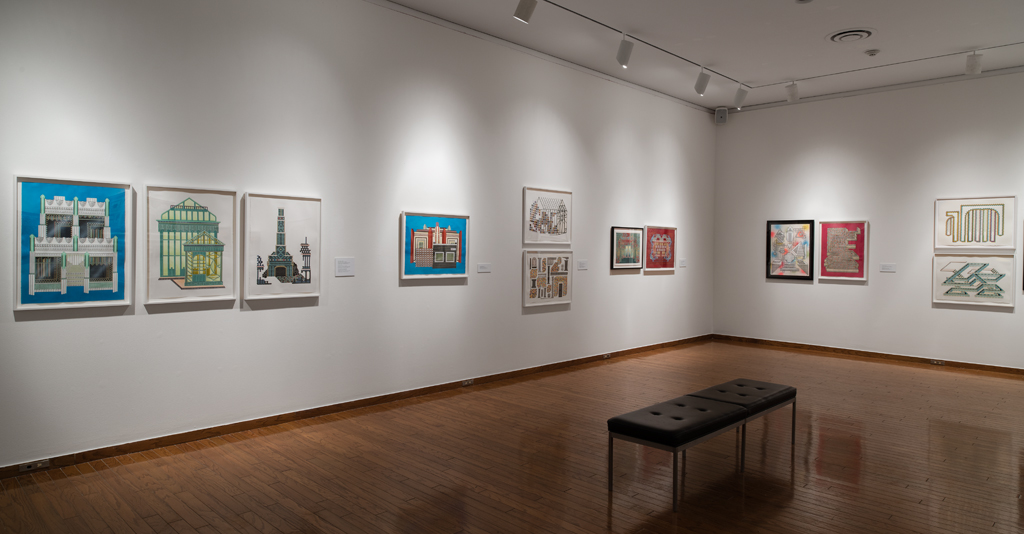
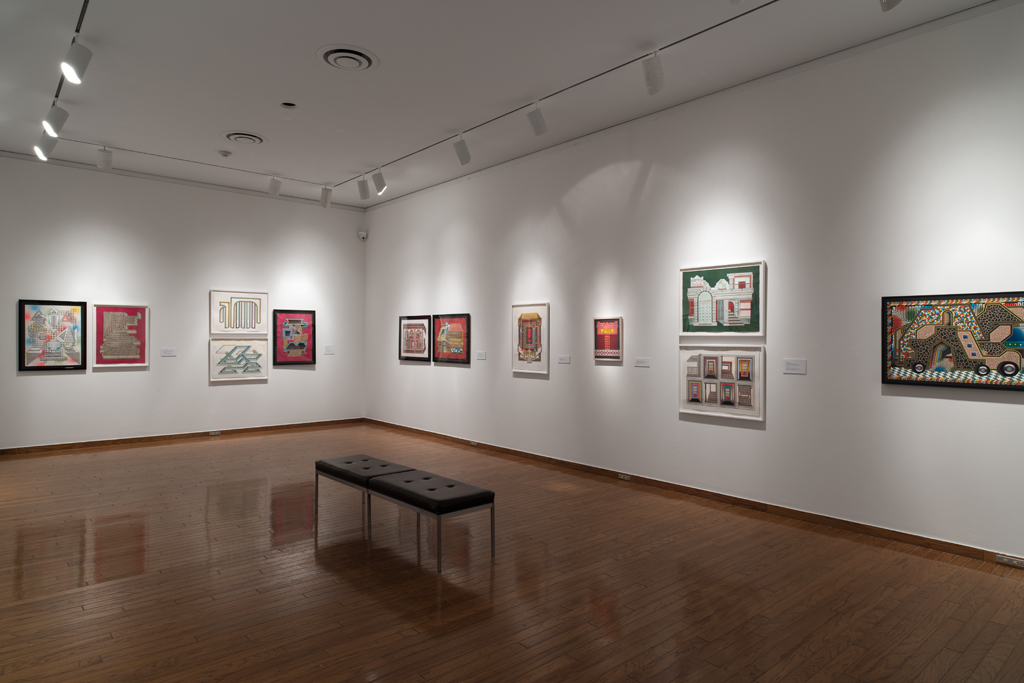
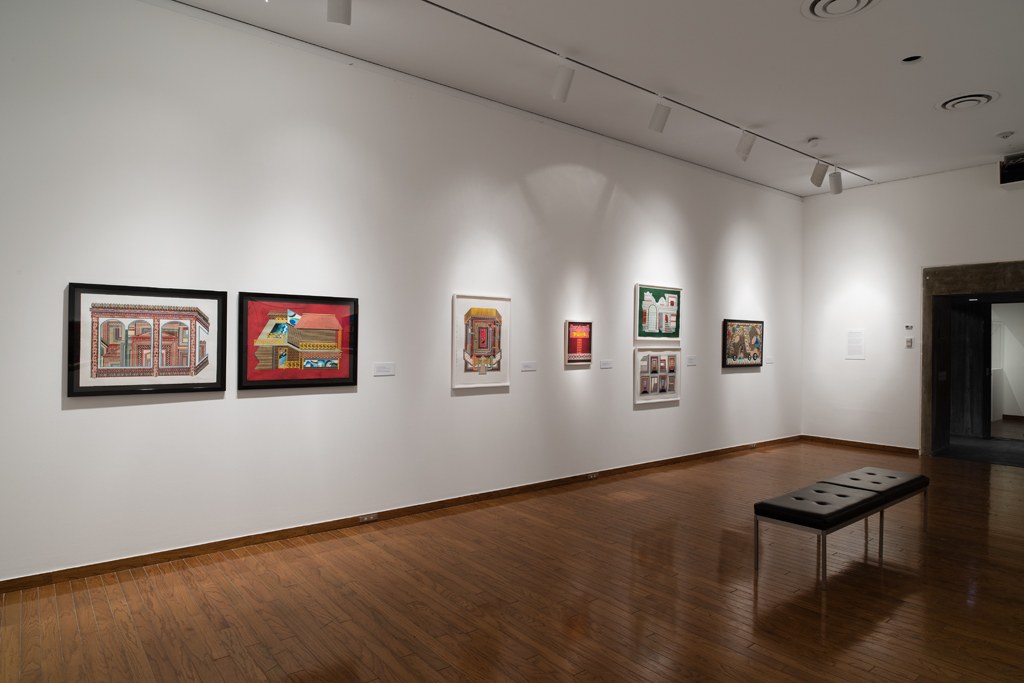
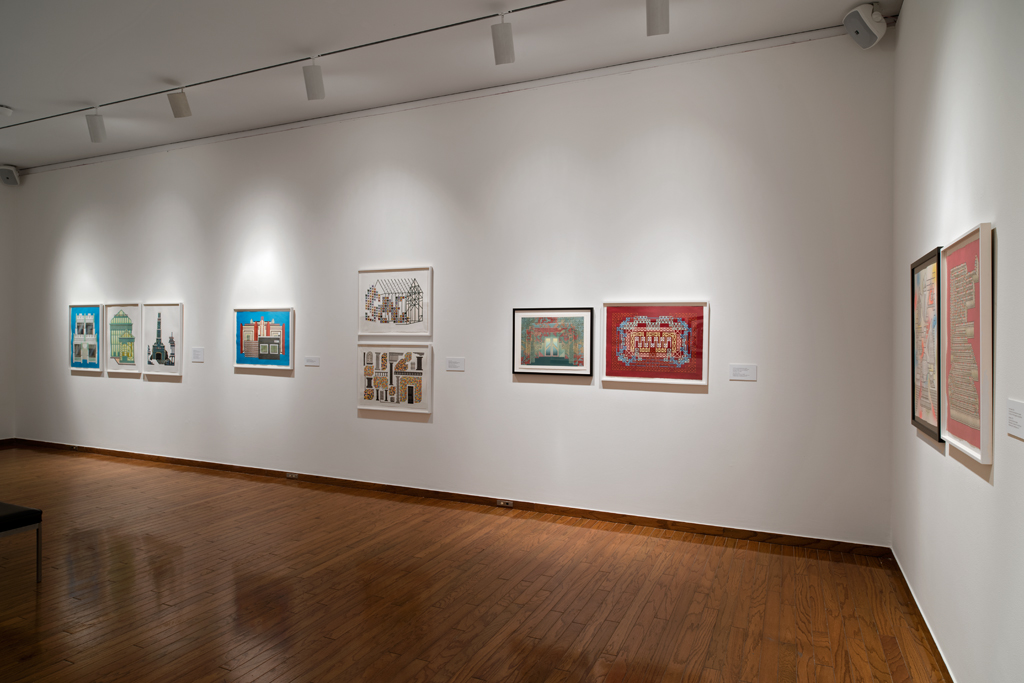
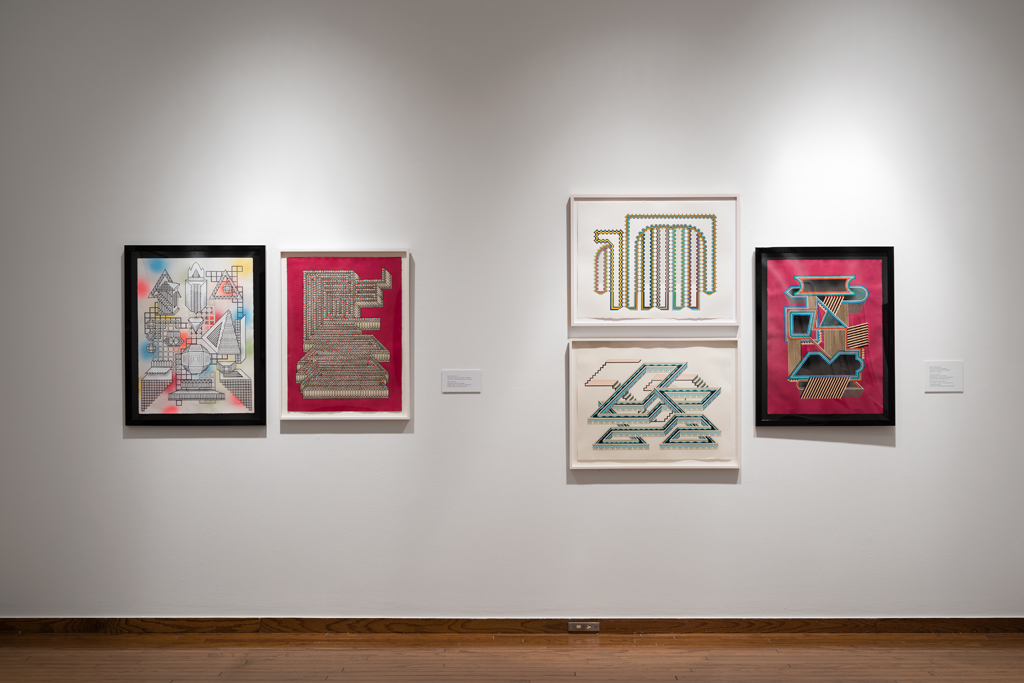
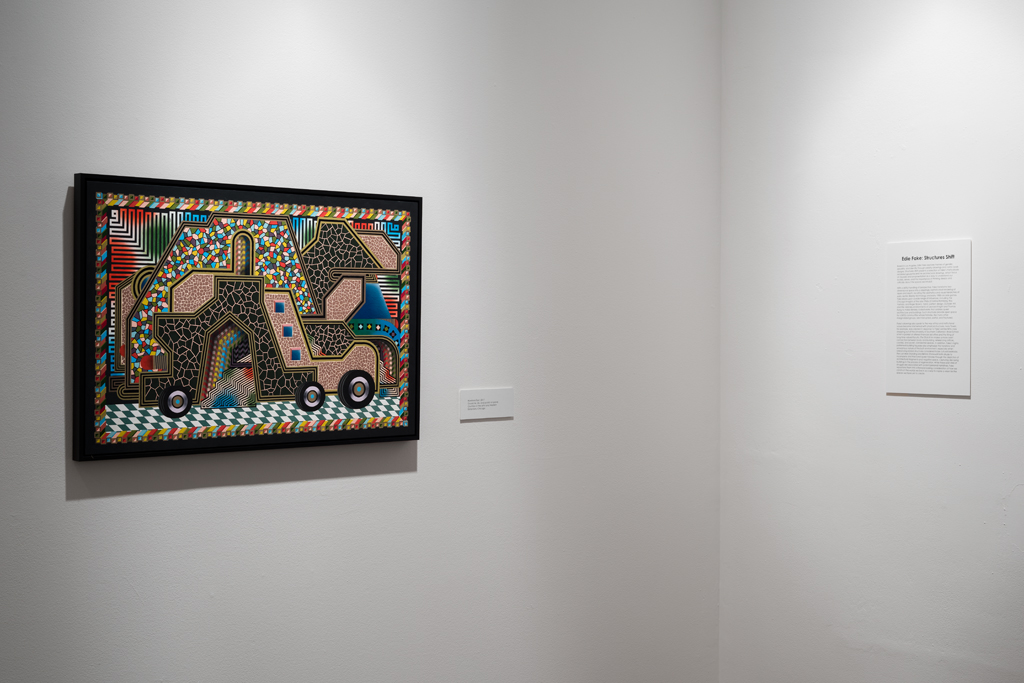
Edie Fake: Structures Shift
Everson Museum of Art: January 27 – May 13, 2018
Based in Los Angeles, Edie Fake explores themes of gender, sexuality, and identity through colorful drawings and comic book designs. Structures Shift presents a selection of Fake’s meticulously rendered gouache and ink architectural drawings, which focus on facade and ornamentation as a way to understand our bodies, selves, and the importance of thinking deeply and critically about the spaces we inhabit.
With a skillful handling of perspective, Fake transforms two-dimensional space into a dazzlingly sophisticated rendering of layers and depth, recalling the aesthetics and visual hierarchies of early vector display technology and early 1980s arcade games. Fake draws upon a wide range of influences, including the Chicago Imagists of the 1960s (Christina Romberg, Ray Yoshida, and Roger Brown), fabric pattern design, Outsider Art, and visionary environments of the Southern Californian desert or Thomas Kong’s constructions made of surplus packaging gleaned from his convenience store, to make densely coded works that address queer architecture and buildings which create free space for LGBTQ communities whose histories, like many other marginalized groups, are interrupted, partial, and fractured.
Included here are drawings that speak to the way ethics and institutional values become intertwined with physical structures. Ivory Tower was created in response to Fake’s entire MFA class dropping out of the University of Southern California’s Roski School of Art in protest of altered financial aid offers and a firing of long-time valued faculty. The Stick It Inn makes a more overt connection between body and building, referencing orifices, cavities, and secret spaces.
Fake’s highly patterned building facades emphasize the transitory and amorphous qualities of architecture—structures often viewed as nearly immortal cultural bedrocks. The Last Man Standing and Before Stonewall reference incomplete and fractured histories through architectural fragments and negative space to capture decaying buildings in the process of regeneration.
The works exhibited in Structures Shift present historically important places that are often associated with potent personal narratives. Instead of wallowing in nostalgia, however, Fake repositions these past sites of struggle into a forward-looking consideration of how we construct the worlds we live in as a way to inspire a vision for the spaces we have yet to create.
—DJ Hellerman, Curator of Art & Programs